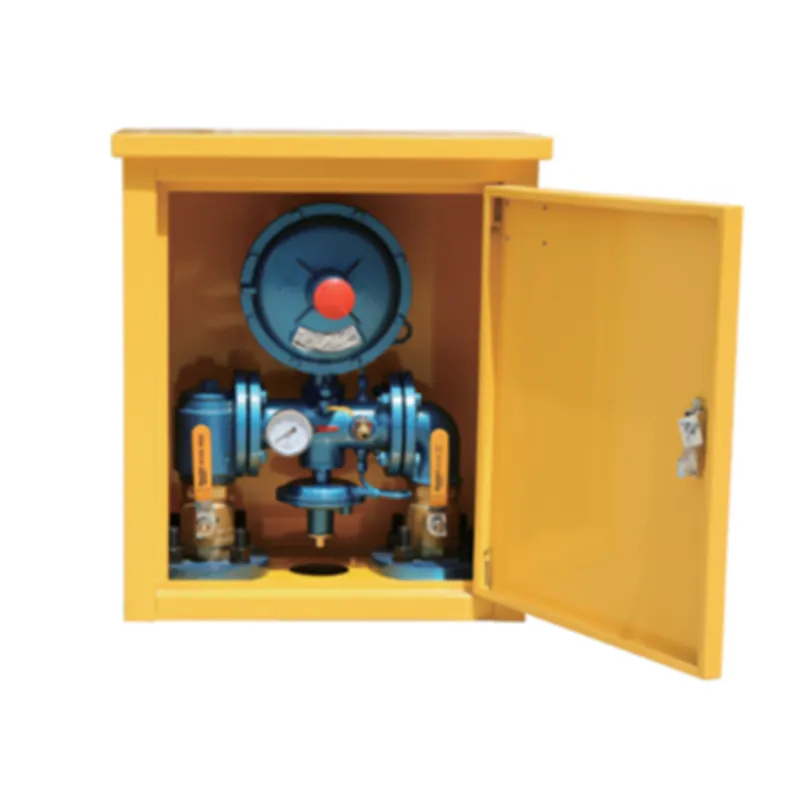
Nov . 10, 2024 00:51
Back to list
Understanding Gas Pressure Regulators and Their Importance in Various Applications
Understanding Gas Pressure Reducers Essential Components in Gas System Management
Gas pressure reducers are critical components in various industrial, commercial, and residential applications. Their primary function is to reduce the pressure of gases, ensuring that gas delivered to equipment and appliances is at a safe and usable pressure. This article explores the functionality, importance, and applications of gas pressure reducers, highlighting their role in enhancing safety and efficiency in gas systems.
What is a Gas Pressure Reducer?
A gas pressure reducer, often referred to as a pressure regulator, is a mechanical device designed to control and maintain the pressure of gas from a high-pressure source to a lower, more workable pressure. These devices are essential in settings where gas is used, such as in gas pipelines, heating systems, industrial processes, and cooking applications. The reducer takes in gas at a high pressure from sources like storage tanks or gas mains and regulates its flow, ensuring the output pressure remains consistent and within safe limits.
How Does it Work?
The operation of a gas pressure reducer involves several key components, including a diaphragm, a spring, and an adjustment screw. When high-pressure gas enters the regulator, it acts on the diaphragm, which moves in response to the pressure changes. The spring provides a counterforce to the diaphragm, allowing it to open or close the valve that controls the gas flow. By adjusting the tension on the spring via the adjustment screw, users can set the desired output pressure.
This design allows gas pressure reducers to respond dynamically to changes in input pressure or flow rates, providing a stable output even when conditions vary. Proper installation and adjustment are crucial to maintaining optimal performance and safety.
Importance of Gas Pressure Reducers
1. Safety One of the foremost reasons for using gas pressure reducers is safety. High-pressure gas can pose significant hazards, including explosions and leaks. Regulators help ensure that gas is delivered at safe pressure levels, minimizing the risk of accidents.
2. System Protection Many appliances and equipment are designed to operate within specific pressure ranges. By regulating the pressure, gas pressure reducers protect sensitive components from damage that can occur when exposed to excessive pressure.
gas pressure reducer

3. Efficiency Gas pressure reducers contribute to the overall efficiency of gas systems. By maintaining consistent pressure, they ensure that appliances operate optimally, reducing wastage and improving energy consumption.
4. Compliance and Standards Many industries are required to adhere to strict regulations concerning gas pressure. Using pressure reducers helps organizations comply with safety standards, reducing liability and ensuring operational integrity.
Applications of Gas Pressure Reducers
Gas pressure reducers are used in various sectors, including
- Residential In homes, gas pressure reducers are commonly found in natural gas systems that supply appliances like stoves, water heaters, and furnaces. They ensure that these devices receive gas at appropriate pressures for optimal functioning.
- Industrial Many industrial processes require specific gaseous conditions. Gas pressure reducers are essential in manufacturing, chemical processing, and power generation, providing precise pressure control for safe and efficient operations.
- Medical In healthcare settings, gas pressure reducers are used in oxygen supply systems and anesthesia machines to ensure that gases are delivered at safe, controlled pressures for patient care.
- Food and Beverage In the food industry, regulators are used in cooking equipment, where consistent gas pressure is crucial for maintaining food quality and safety.
Conclusion
Gas pressure reducers are indispensable devices that play a vital role in the safe and efficient use of gases across various applications. By reducing high pressure to usable levels, they enhance safety, protect equipment, and ensure compliance with industry standards. As technology continues to advance, the design and functionality of gas pressure reducers are likely to evolve, further improving their efficiency and reliability. For anyone involved in the gas industry or using gas in any capacity, understanding and properly implementing gas pressure reducers is not just beneficial but essential for safe and effective operations.
Latest news
-
Safety Valve Spring-Loaded Design Overpressure ProtectionNewsJul.25,2025
-
Precision Voltage Regulator AC5 Accuracy Grade PerformanceNewsJul.25,2025
-
Natural Gas Pressure Regulating Skid Industrial Pipeline ApplicationsNewsJul.25,2025
-
Natural Gas Filter Stainless Steel Mesh Element DesignNewsJul.25,2025
-
Gas Pressure Regulator Valve Direct-Acting Spring-Loaded DesignNewsJul.25,2025
-
Decompression Equipment Multi-Stage Heat Exchange System DesignNewsJul.25,2025

